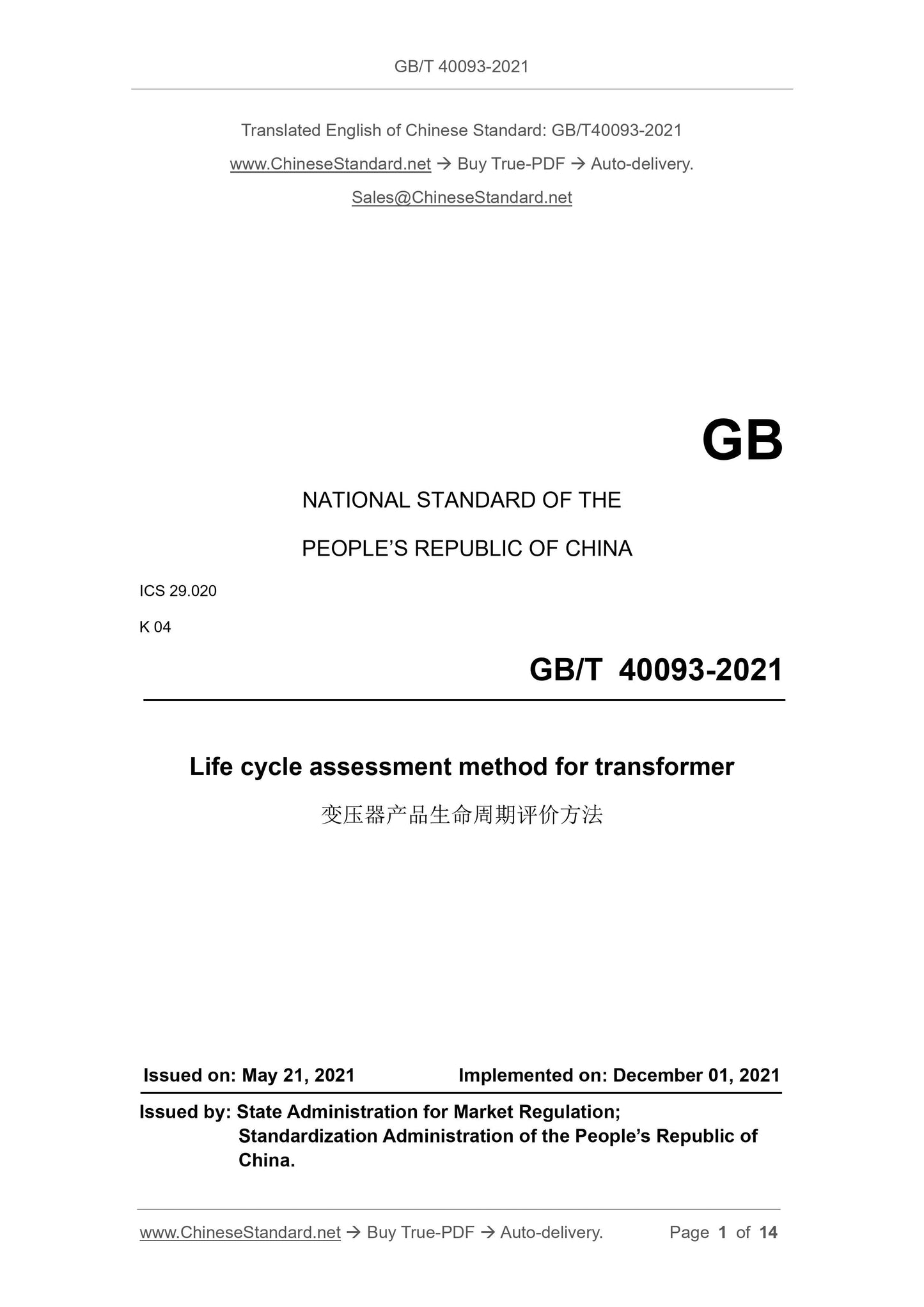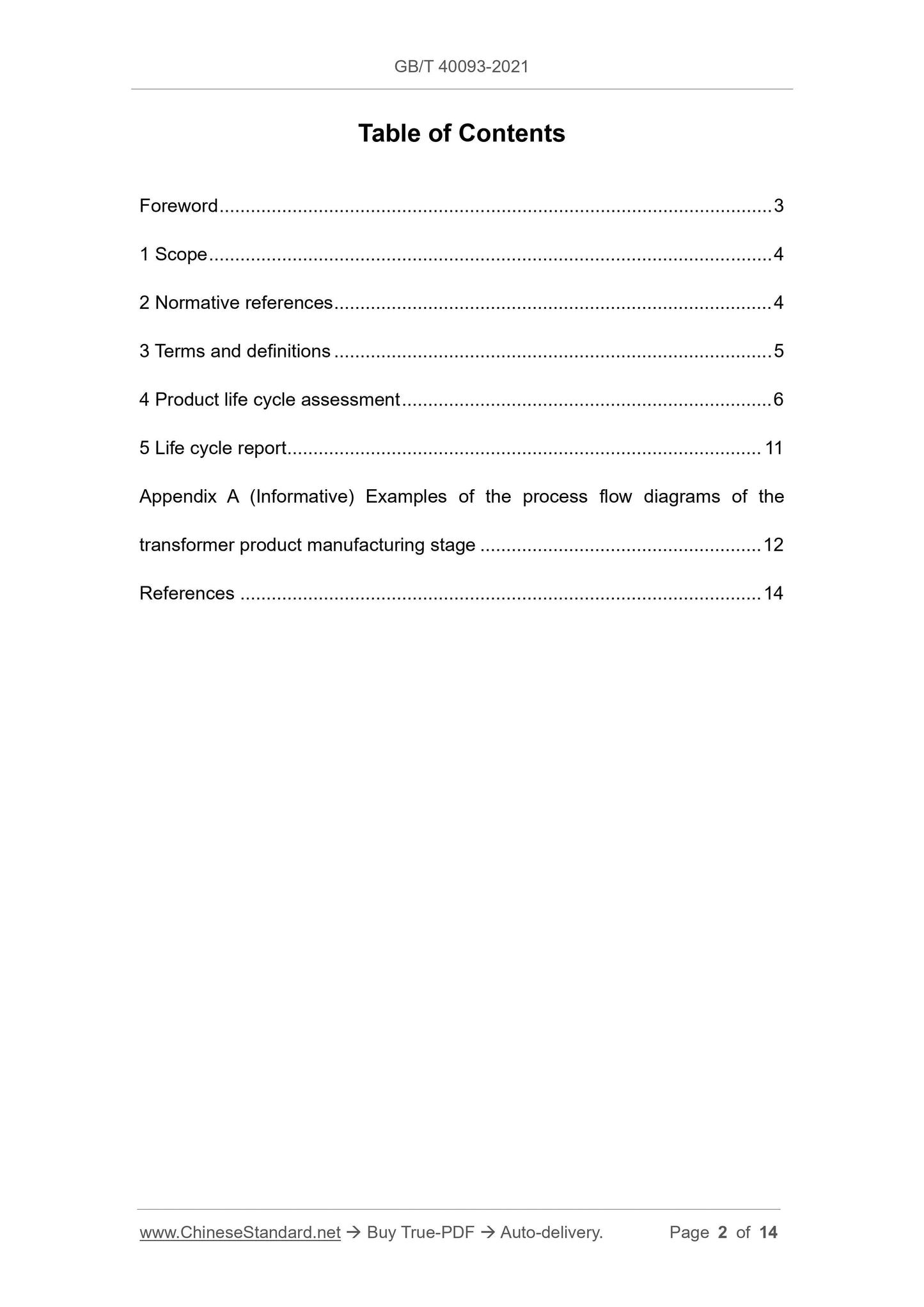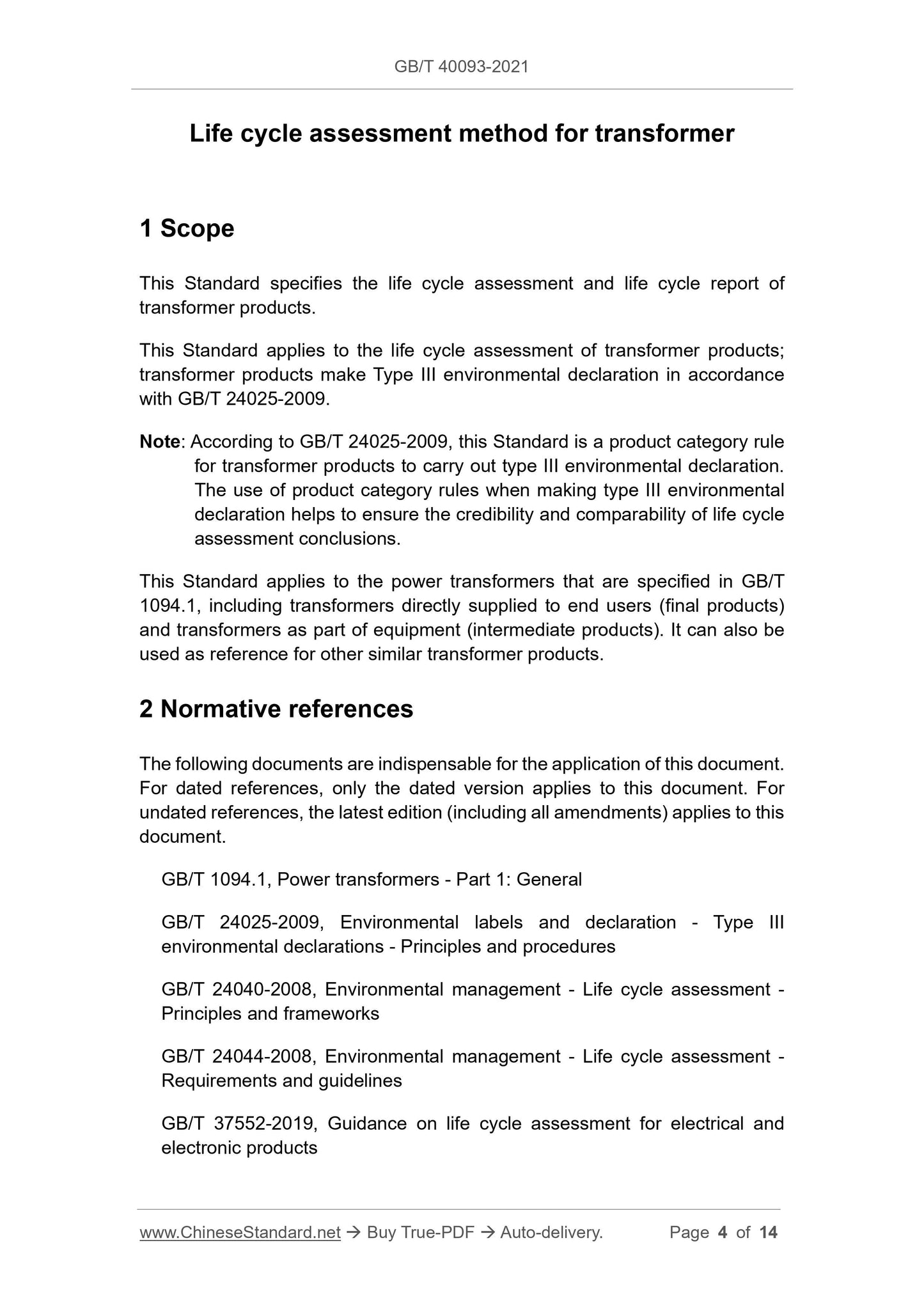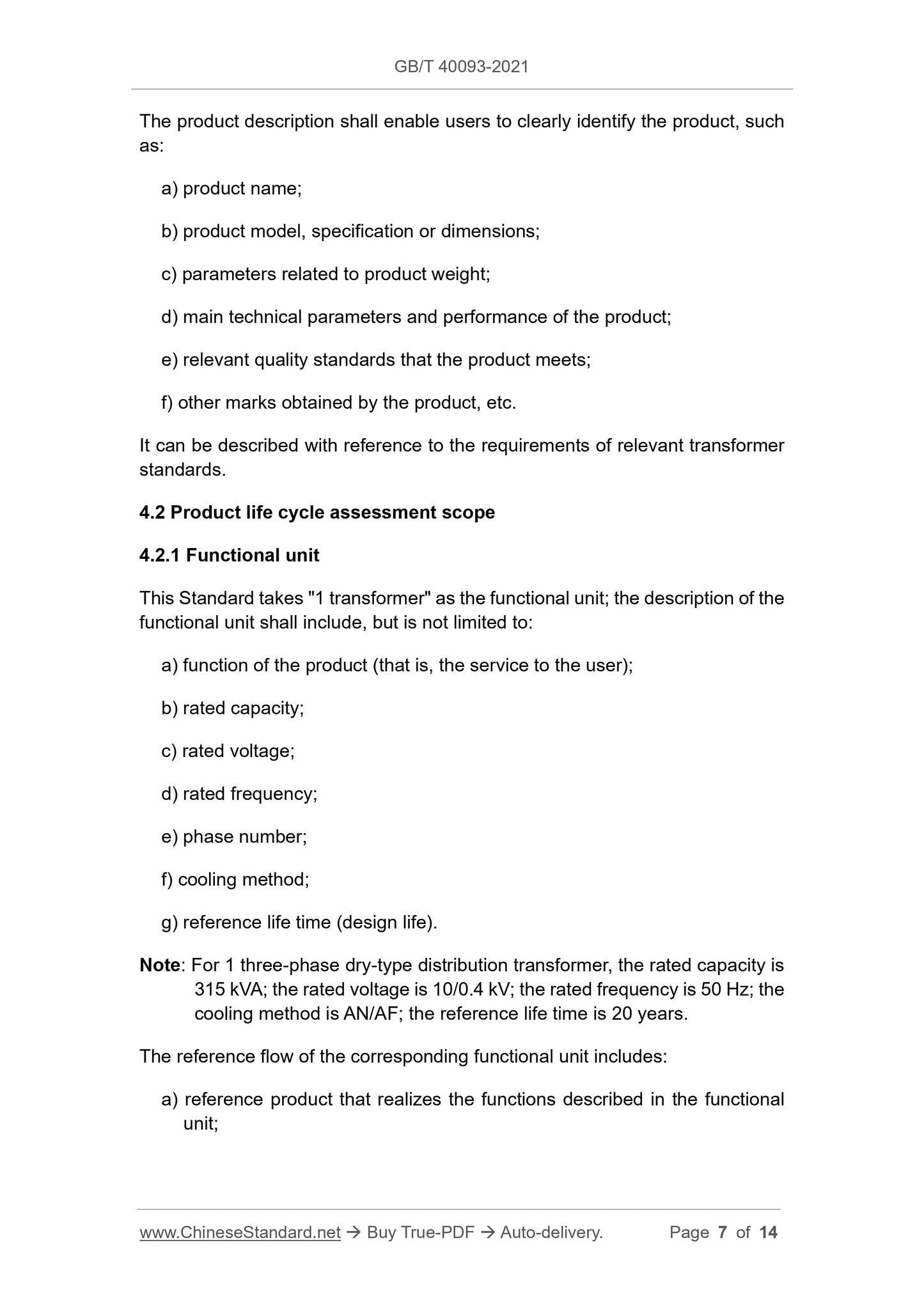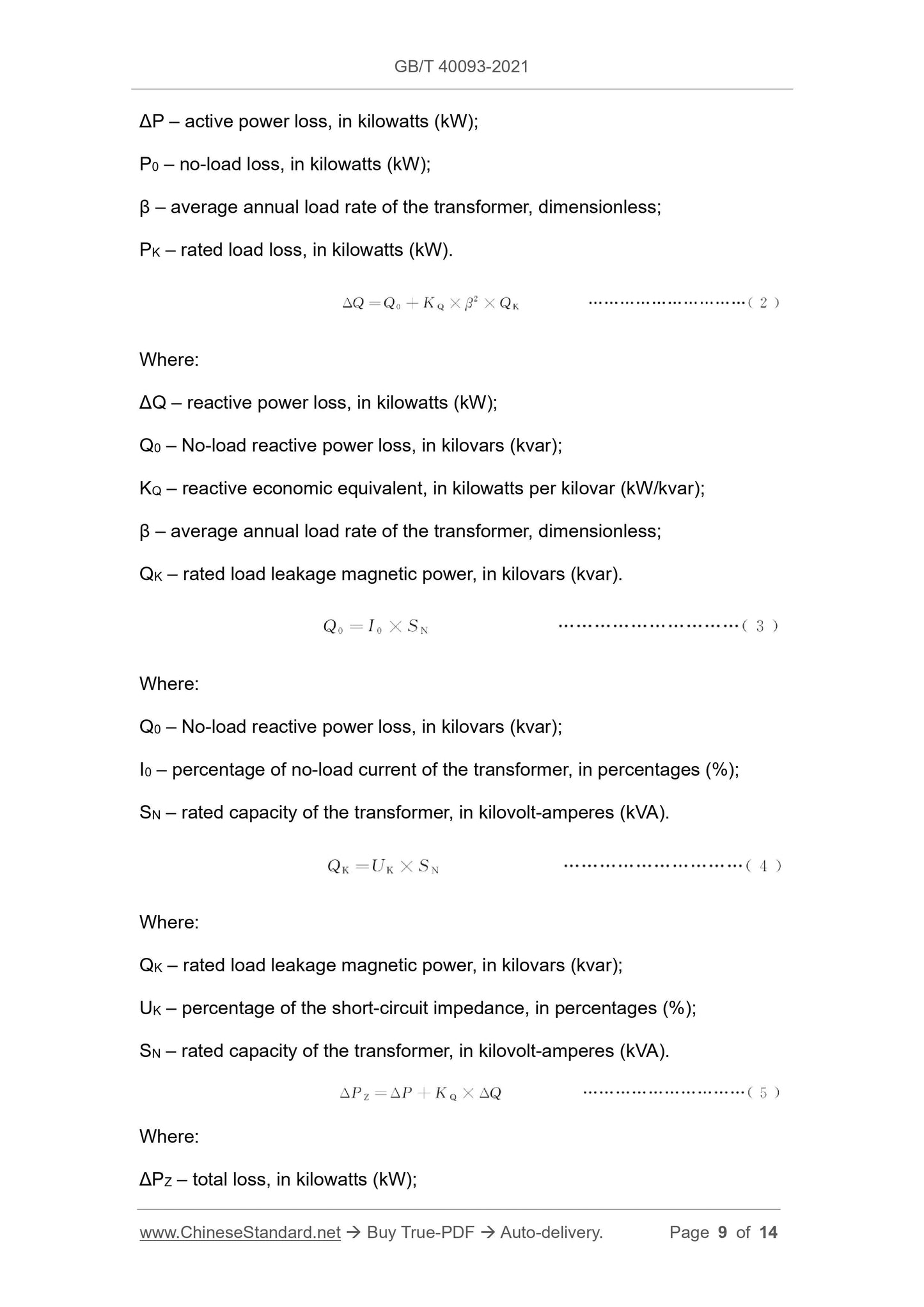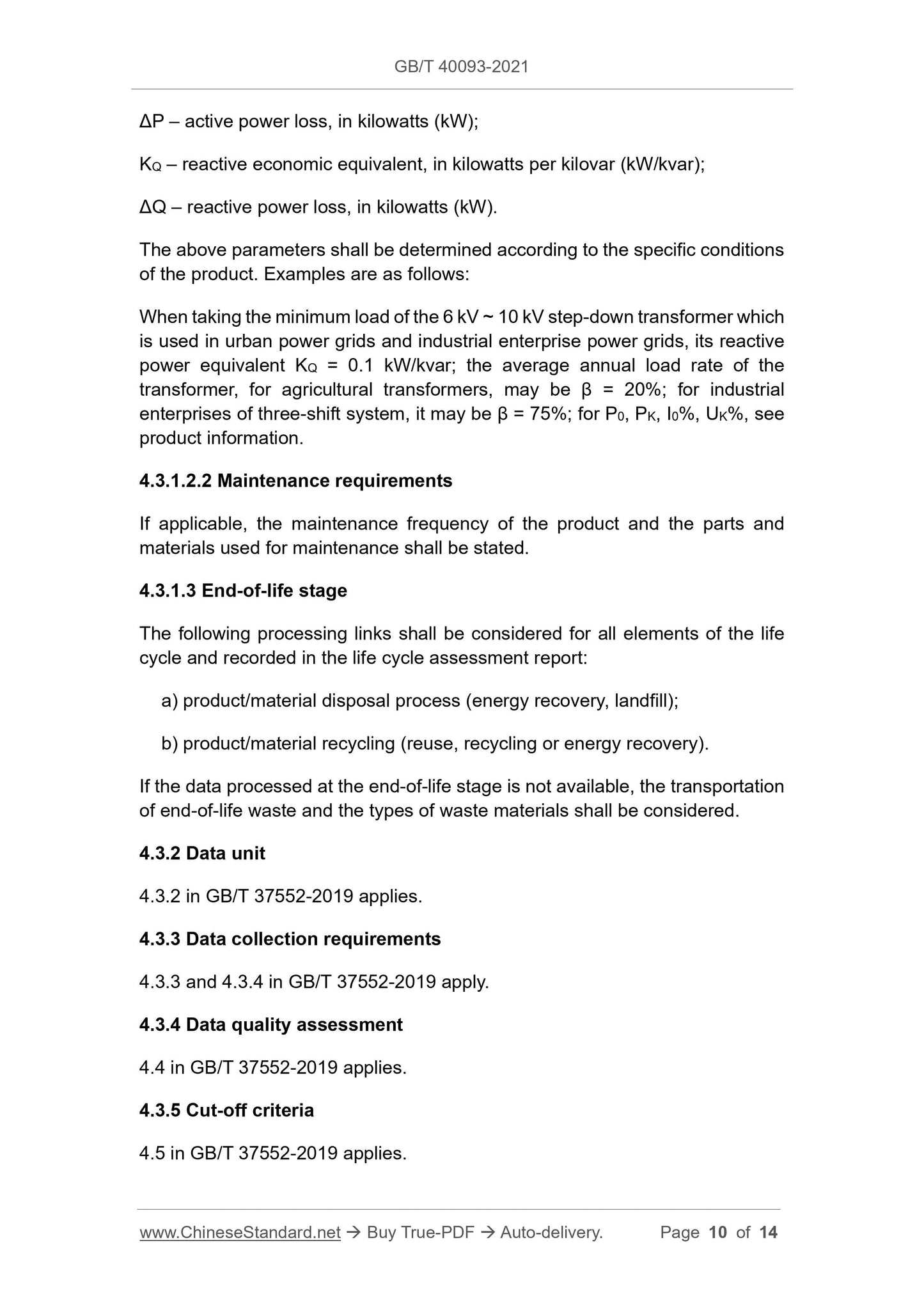1
/
of
6
www.ChineseStandard.us -- Field Test Asia Pte. Ltd.
GB/T 40093-2021 English PDF (GB/T40093-2021)
GB/T 40093-2021 English PDF (GB/T40093-2021)
Regular price
$195.00
Regular price
Sale price
$195.00
Unit price
/
per
Shipping calculated at checkout.
Couldn't load pickup availability
GB/T 40093-2021: Life cycle assessment method for transformer
Delivery: 9 seconds. Download (and Email) true-PDF + Invoice.Get Quotation: Click GB/T 40093-2021 (Self-service in 1-minute)
Newer / historical versions: GB/T 40093-2021
Preview True-PDF
Scope
This Standard specifies the life cycle assessment and life cycle report oftransformer products.
This Standard applies to the life cycle assessment of transformer products;
transformer products make Type III environmental declaration in accordance
with GB/T 24025-2009.
Note: According to GB/T 24025-2009, this Standard is a product category rule
for transformer products to carry out type III environmental declaration.
The use of product category rules when making type III environmental
declaration helps to ensure the credibility and comparability of life cycle
assessment conclusions.
This Standard applies to the power transformers that are specified in GB/T
1094.1, including transformers directly supplied to end users (final products)
and transformers as part of equipment (intermediate products). It can also be
used as reference for other similar transformer products.
Basic Data
| Standard ID | GB/T 40093-2021 (GB/T40093-2021) |
| Description (Translated English) | Life cycle assessment method for transformer |
| Sector / Industry | National Standard (Recommended) |
| Classification of Chinese Standard | K04 |
| Word Count Estimation | 14,111 |
| Issuing agency(ies) | State Administration for Market Regulation, China National Standardization Administration |
Share
